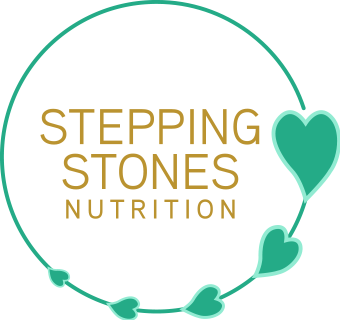Have you ever paid attention to how you feel after eating different foods. Most people haven’t. What you eat can lift your energy and mood, or it may leave you feeling flat and foggy. It’s not surprising, as what we choose to eat forms the foundation for how we feel, how we function, and how well we age.
I’m a firm believer in the power of whole food – giving your body the right fuel to run well. And it doesn’t rely on buying expensive superfoods or limiting yourself. It’s about choosing whole foods that nourish your body and mind, helping you feel more energised, clear-headed and balanced.
Why Whole Foods Matter for Energy & Mood
What we eat affects far more than just our taste buds. The nutrients from real food support steady energy levels and moods throughout the day. They also play a key role in supporting blood sugar balance, gut health and inflammation, which all influence how we feel mentally and physically. Over time, these choices shape our long-term health, building resilience to stress, illness and the natural effects of ageing.
How Processed Foods Drain Your Energy
The standard Australian diet is high in refined carbohydrate, unhealthy fats, sugar, processed foods and low in fibre, healthy fats and quality protein. Processed and ultra-processed foods are engineered to be hyper-palatable. Food companies invest heavily in making them irresistible – perfecting the crunch, smell, colours and flavours, often using artificial additives you’d never stock in your own pantry.
When you eat these foods, your brain releases dopamine (the “feel-good” chemical), creating a short-lived high and encouraging you to keep eating. But the long-term effects aren’t so kind:
- Mood dips and irritability
- Energy crashes
- Damage to your gut microbiome
- Increased inflammation and mental health challenges
Breaking this cycle can be difficult, but the rewards are definitely worth it.
So many clients tell me that once they break the cycle and get back to basics – eating loads of veggies, fresh fruit and good quality proteins – they’re surprised at how much tastier the vegetables are and how much they enjoy them. It’s such a lovely shift because, when you’re feeling so much better too, it makes you want to keep going with your new healthy habits.
Common Pitfalls That Can Leave You Feeling Flat
Many people unknowingly sabotage their energy:
- Skipping meals, especially breakfast, can lead to poor sleep and afternoon snacking. People often don’t realise the connection.
- Eating processed foods that lack nutrients we need and can cause blood sugar spikes and crashes.
- Not getting enough protein, fibre and healthy fats leaving them feeling foggy, irritable and hungry.
To feel better, focus on nutrient-dense whole foods:
- Protein keeps you fuller for longer and stabilises blood sugar and healthy fats will help to keep you full for longer
- Healthy fats support your skin, heart & brain health and mood
- Fibre from a variety of fruits and vegetables feed your microbiome, supporting digestion and emotional wellbeing.
What Helps Instead – A “Food First” Approach
Eating well doesn’t have to be complicated. Choosing a variety of whole foods, colourful vegetables, good quality proteins and healthy fats helps nourish your gut, stabilise blood sugar and support brain health. Simple swaps can make a big difference, like swapping processed snacks for nuts or fresh fruit, or better still, ensuring your meals are balanced so you don’t have the urge to snack. Building your plate around whole foods is the foundation for steady energy and balanced moods.
Practical Tips You Can Start Today
- Build your plate with colour and variety: aim for at least half your plate to be vegetables. Herbs count too and I find them to be the easiest thing to grow!
- Try something different for breakfast. High carbohydrate breakfasts are common (cereal, toast). These are fine in moderation when combined with protein, fruit & vegetables. Consider trying:
- Dinner leftovers
- a snack plate with cheese, carrots, gherkins, celery,
- Rye toast with mushrooms and spinach with an egg,
- If you like a light breakfast smoothies are a good option, include vegetables such as spinach, zucchini or frozen cauliflower.
- Include protein with every meal to keep energy steady. Choose your protein first and build your meal around that.
- Track your water intake. When clients track their water intake, they’re often surprised how low it is. Dehydration can be mistaken for hunger. If you feel hungry between meals, try drinking a glass of water first.
- Keep a food and mood journal. Notice which foods help your feel calm and enegised and which ones leave you feeling anxious, foggy or flat. One female discovered tomatoes were making her feel jittery!
You Don’t Need to Change Everything at Once
Remember, this is a journey, not a race. Small steps can lead to real, lasting changes. It’s fine to pick one of the practical tips, try that for a week and see how you go.
If you’re ready to feel more energised and in control of your health, let’s chat about what’s possible for you. Book a free intro chat here.

